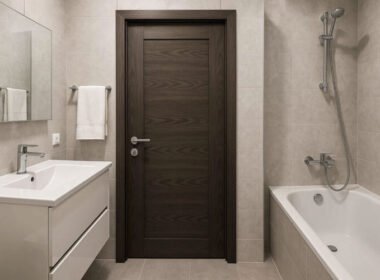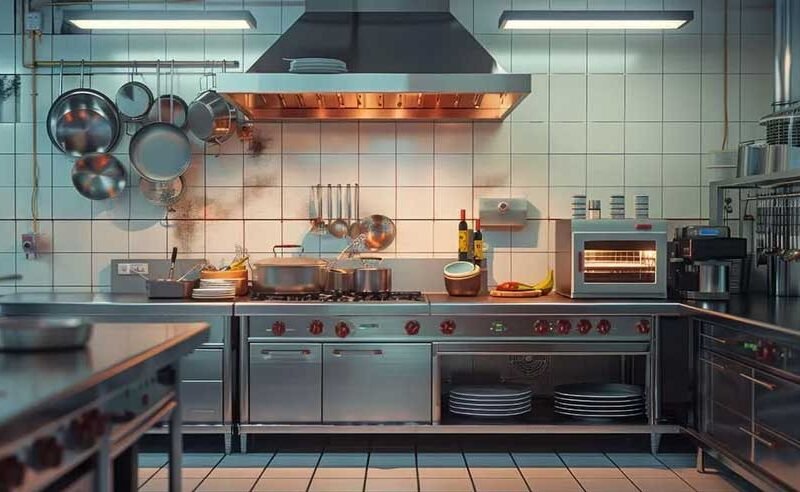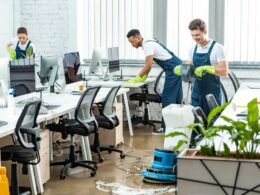In the bustling heart of every commercial kitchen lies a crucial component that often goes unnoticed until disaster strikes—the kitchen hood. This ventilation system is responsible for trapping grease-laden vapors, smoke, and heat generated during cooking. However, when neglected, a dirty kitchen hood can turn from an essential asset into a ticking time bomb. Understanding the risks and prioritizing restaurant hood cleaning can mean the difference between a smoothly running kitchen and a devastating fire.
Why Kitchen Hood Systems Matter
A kitchen hood, also known as a range hood or exhaust hood, is designed to remove airborne contaminants from the kitchen environment. In commercial kitchens, the volume of cooking is significantly higher than in homes, leading to an accumulation of grease, soot, and smoke in the exhaust system. The system includes filters, ductwork, fans, and exhaust outlets—all of which can collect flammable residues if not regularly cleaned, notes Action Properties company.
Properly maintained hoods improve air quality and temperature regulation and play a pivotal role in fire prevention. The National Fire Protection Association (NFPA) has established guidelines (specifically NFPA 96) that mandate the regular cleaning of commercial kitchen hood systems. These standards are not merely bureaucratic red tape—they’re lifesaving protocols.
The Fire Hazard: Grease Buildup and Ignition
One of the most immediate and severe risks of a dirty kitchen hood is fire. Grease is highly flammable, and when it accumulates in the hood and ductwork, it creates a prime environment for combustion. If flames from a stovetop reach the hood system, through a flare-up or improper use, they can ignite the grease deposits and cause a fire to spread rapidly through the exhaust system and into the building structure.
According to the U.S. Fire Administration, approximately 5,900 restaurant building fires occur each year, and a significant percentage of these originate from cooking equipment and grease buildup. In nearly every case, the extent of the damage is compounded by poor maintenance of the hood system.
Health and Safety Compliance
Beyond the fire hazard, a dirty kitchen hood can also violate health and safety regulations. Local health departments, insurance companies, and fire marshals all require proof of regular hood cleaning. A neglected hood system can lead to fines, the suspension of operating licenses, or even the closure of the restaurant.
Regular restaurant hood cleaning ensures compliance with:
- NFPA 96standards
- OSHA regulations
- Local fire codes and health inspections
- Insurance policy requirements
Insurance providers often require documentation of routine hood cleaning as part of their risk assessment protocols. A claim filed after a grease fire may be denied if it’s determined that proper maintenance was not performed, leaving restaurant owners liable for thousands—or even millions—of dollars in damages.
Indoor Air Quality and Working Conditions
The benefits of a clean kitchen hood extend beyond fire safety. Poor ventilation due to clogged filters and ducts can severely impact indoor air quality. High concentrations of smoke, carbon monoxide, and airborne grease particles can create an unhealthy work environment. Employees may experience respiratory problems, eye irritation, fatigue, and heat stress—all of which can lead to reduced productivity and increased turnover.
Moreover, a greasy, poorly ventilated kitchen can negatively affect food quality and sanitation. Particles can settle on surfaces and food items, leading to contamination. Regular restaurant hood cleaning improves air flow, reduces odors, and contributes to a cleaner, healthier kitchen overall.
Frequency of Hood Cleaning: What the Guidelines Say
The frequency of cleaning depends on the volume and type of cooking:
- High-volume operations(such as 24-hour restaurants or establishments using solid fuels like wood or charcoal): Monthly cleaning
- Moderate-volume operations(sit-down restaurants, hotel kitchens): Quarterly cleaning
- Low-volume operations(church kitchens, seasonal businesses): Semi-annual or annual cleaning
It’s crucial to assess your restaurant’s specific needs and develop a tailored cleaning schedule. Most professional hood cleaning companies provide a certificate of compliance after each cleaning, which can be presented to inspectors and insurers.
Professional vs. DIY Cleaning
While staff can and should clean exterior surfaces and filters daily, the deeper components of the system—including ductwork and fans—require specialized equipment and expertise. Professional restaurant hood cleaning companies use high-pressure washers, industrial degreasers, and access tools to reach hidden areas of buildup.
Benefits of hiring certified professionals include:
- Thorough removal of all grease and flammable residues
- Compliance with NFPA and local codes
- Detailed inspection and documentation
- Reduced liability in case of fire or inspection
Attempting a DIY approach for deep cleaning can be risky and ineffective. Without the proper tools and training, hidden grease deposits may remain, creating a false sense of security.
Warning Signs Your Hood Needs Cleaning
Even with a routine cleaning schedule, it’s important to watch for signs that your kitchen hood system may need attention sooner:
- Visible grease buildupon filters or hood surfaces
- Strong, lingering odorsof grease or smoke
- Reduced suctionor airflow from the hood
- Unusual noisesfrom the exhaust fan
- Stains or dripson walls or ceiling near the ductwork
If any of these symptoms are present, it’s best to schedule a professional inspection immediately.
The Financial Case for Regular Hood Cleaning
Some restaurant owners may view regular restaurant hood cleaning as an avoidable expense. However, the cost of neglect far outweighs the price of prevention. Consider these potential costs:
- Fire damage repairs: Tens to hundreds of thousands of dollars
- Business interruption: Lost revenue during downtime
- Fines and legal fees: Due to non-compliance or lawsuits
- Increased insurance premiums: Or loss of coverage altogether
- Reputation damage: From media coverage of incidents or failed inspections
Routine maintenance is a cost-effective investment in safety, continuity, and peace of mind.
Choosing the Right Hood Cleaning Service
When selecting a cleaning provider, look for companies that:
- Are certifiedby organizations like IKECA (International Kitchen Exhaust Cleaning Association)
- Provide before-and-after photosfor transparency
- Issue a certificate of performancefor compliance
- Have positive reviews and references
- Offer scheduled maintenance plans
Establishing a partnership with a trusted provider ensures consistency and accountability.
Make Safety a Standard
The kitchen hood may be out of sight, but it should never be out of mind. The consequences of neglect—ranging from fires to financial ruin—are simply too great. By committing to regular restaurant hood cleaning, restaurant owners and managers can protect their businesses, their employees, and their customers.
In today’s fast-paced food industry, safety, compliance, and cleanliness are non-negotiable. Make hood maintenance a standard operating procedure, not an afterthought. It’s a small step that makes a big difference.










